Auguste Escoffier, the legendary French chef, once said “La bonne cuisine est la base du véritable bonheur,” which translates to “good food is the foundation of genuine happiness.”
To no surprise, the Auguste Escoffier School of Culinary Arts curriculum is inspired by the rich French legacy of Escoffier. When we examine exceptional contemporary cuisine, it usually involves many French culinary techniques practiced in the late 19th and early 20th centuries.
For this reason alone, it’s important for aspiring chefs to choose culinary schools that might pay homage to French culinary traditions. Here are several more reasons why aspiring chefs should consider studying at a French-inspired culinary school.
French Culinary History Might Influence You in the Kitchen
Many cooking schools based in large culinary meccas such as Paris, France, and the United States weave in French culinary history as part of their curriculum. Why? Because this knowledge might influence your distinct cooking style and approach as a professional chef.
The Beginning of French Cuisine
French food goes back to Medieval Cuisine, otherwise known as Moorish Cuisine, which heavily focused on spiced meats and aromatic herbs. The dining approach at this time was “service en confusion” which meant all of the meals were served at the same time.
The presentation was also essential—with a keen emphasis on vibrant displays laced with saffron, egg yolks, sunflowers, and more of an extra dose of color.
As time progressed, French cooking evolved through many iterations of other cultural influences from Italy, Switzerland, Germany, Spain, and beyond.
The Rise of Auguste Escoffier’s Legacy
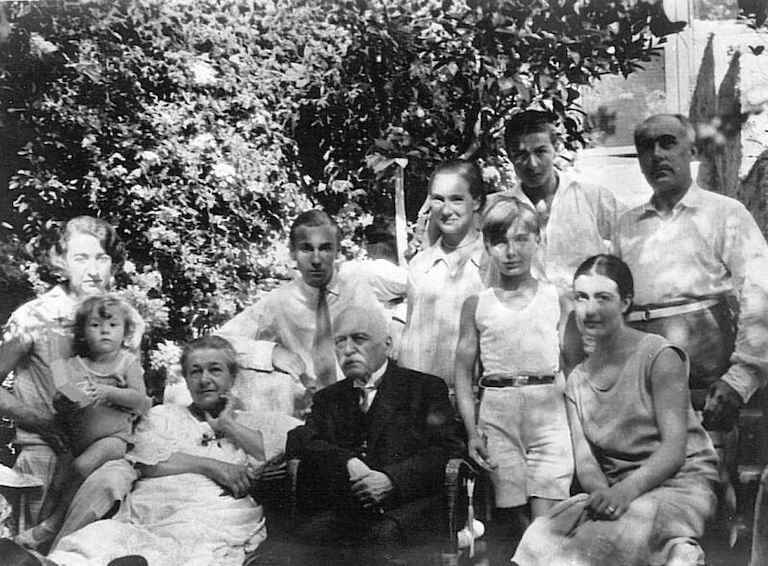
Auguste Escoffier, the founder of haute cuisine and namesake of French culinary institute.
During the 17th and 18th centuries, the inception of “haute cuisine” or “high cuisine” surfaced in one of the iconic French cookbooks written by a gourmet chef, La Varenne.
Meanwhile, Georges Auguste Escoffier, known as the King of Chefs and Chef of Kings, spent a few decades working at some of Paris’ finest restaurants and even moved to London where he began his tenure at the Savoy Hotel.
He eventually introduced haute cuisine to the modern world and conceptualized famous dishes such as filets de sole coquelin, homard aux feux eternels, and la peche melba. Escoffier continued on to publish his first cookbook, Le Guide Culinaire, still considered one of the industry’s leading texts.
“After reading the forward material and getting to the first stock recipe, I was overcome with the new and thrilling feeling of the whole world of French food preparation being revealed and opened up to me. I read and study the recipes to make one or two for practice, but in my thoughts, this book was not meant to be the definitive way one must cook. It is just a beginning! Escoffier provides us with everything that succeeded in the past and using that as a base of perfection, there is no staunch rule that it must always be as written.”
Christina M., Amazon Review
Understand Timeless French Cooking Philosophies and Techniques
French cooking is multifaceted and rooted in historic philosophies and techniques that modern-day chefs still utilize. Many of these are taught at French-inspired culinary schools like Auguste Escoffier School of Culinary Arts.
Escoffier students enrolled in the culinary arts degree and diploma programs can take preliminary courses that cover these classic French principles. Oftentimes, when chefs start with this foundation, it’s easier to improvise and experiment in the kitchen.
“[My great-grandfather] certainly would be very proud of seeing all that is done under his name. He himself wrote in Memories of My Life that he was very proud of having taught and formed over 2000 chefs who in their turn went around the world and promoted French cuisine and techniques.”*
Michel Escoffier, Great-grandson of Auguste Escoffier; President of the Auguste Escoffier School of Culinary Arts Advisory Board
Brigade de Cuisine System
Auguste Escoffier was hyper-focused on streamlining the workflow in the kitchen, which is why he engineered the progressive brigade de cuisine system, which systematically organizes the kitchen into a hierarchy. Ultimately, professional chefs in modern kitchens still employ this system today to ensure efficiency and leadership.
Study French Culinary Techniques…In France!
Did you know that current students, and alumni of Escoffier can now study abroad at the renowned French culinary school, École Ducasse? Escoffier graduates can transfer credits towards a bachelor’s degree in a variety of programs.
Explore how you can expand your culinary education abroad at the campus in Paris or Yssingeaux, France.
Mise en Place
Another French term Escoffier introduced to the modern kitchen is “mise en place” which translates to “everything in its place.”
This is simply the process of ensuring all of the prep work is done, including checking the recipe, collecting your tools, and gathering necessary amounts of ingredients ahead of time.
Many professional chefs today rely on this concept to work efficiently in the kitchen and get dishes to guests in a timely manner.
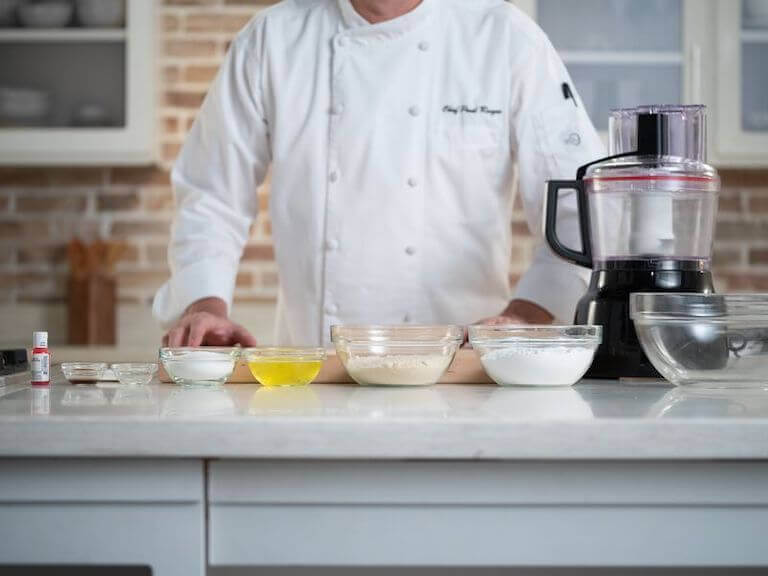
Example of mise en place, a French cooking school technique.
French Knife Cuts
Most professional chefs might know that the way ingredients are cut impact how it cooks. This is exactly why it’s imperative to understand certain French knife cuts, usually taught at a French culinary school. Escoffier students can practice these basic knife cuts to ultimately ensure more even cooking throughout.
Types of French Knife Cuts
- Julienne: Small, uniform matchsticks—usually vegetables
- Batonnet: Similar to julienne, but it’s a bit shorter and thicker
- Brunoise: Fine dice, often used in sauces for a quick release in flavor
- Chiffonade: Fine strips—usually leafy greens or herbs
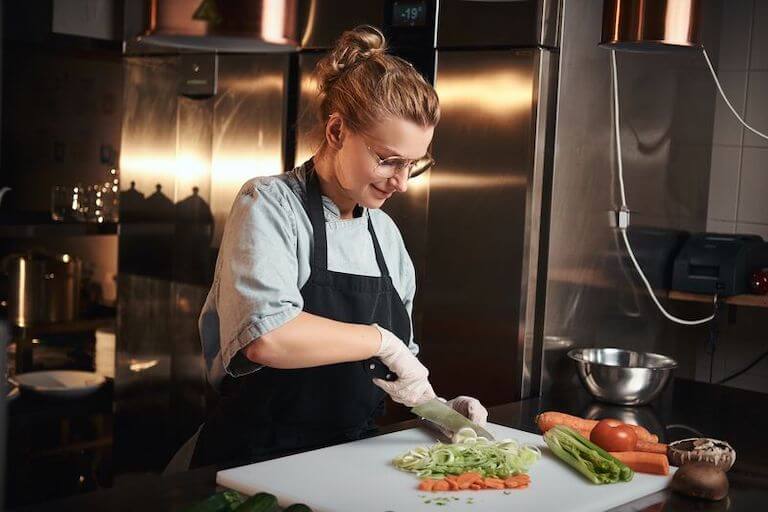
Professional chef practicing knife cuts—a technique taught in French cooking school.
The Foundational Mirepoix
Most cuisines offer a unique aromatic profile that usually “enrich” a dish—offering distinct flavors. For French cuisine, this is the mirepoix—a finely diced blend of two parts onion, one part celery, and one part carrots, lightly cooked in butter or oil. Escoffier students can explore this French staple in the culinary arts’ program’s Culinary Foundations course.
The Roux
Another fundamental French cooking technique is the baseline for several mother sauces, which is the roux. Made with equal parts flour and fat (usually butter) the roux serves as a thickening agent for many sauces and stocks—potentially mitigating any unwanted lumps.
The Five Mother Sauces
Legendary French chef Marie-Antoine Carême conceptualized five foundational sauces in French cooking that most professional chefs still use today. Escoffier even invented one of them, which is the hollandaise sauce.
The Five Mother Sauces
- Bechamel: A roux of flour and butter with milk
- Espagnole: A brown stock (veal or beef) flavored with mirepoix and thickened with a roux
- Hollandaise: Made from clarified butter, warm egg yolks, and an acid like vinegar or white wine
- Tomate: Made from rendered pork, aromatic veggies, tomatoes, stock, and ham bone for flavor
- Velouté: A white stock (chicken, veal, or vegetables) flavored with mirepoix and thickened with a blonde roux
Discover Rich Ingredients
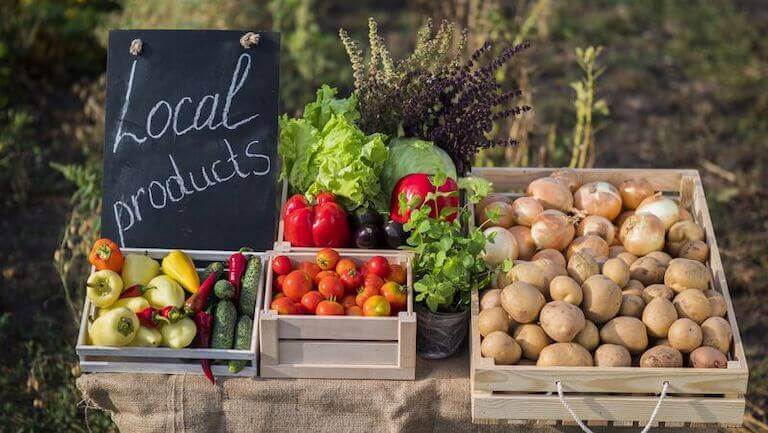
In French cuisine, using “simple” and “high-quality” ingredients is usually the best way to amplify any given dish. This may include organic olive oil, wine, cheese, and seasonal vegetables.
Using the “Bouquet Garni” is also very common in French cooking, which involves assembling a bouquet of fresh-stemmed and leafy herbs like rosemary, thyme, and bay leaf tied together with kitchen twine. These aromatic herbs usually add an extra layer of flavor to hearty soups and stocks.
At Escoffier, students can engage in a six-week Farm To Table® Experience that touches on how to source fresh, sustainable ingredients, ethically—incorporating some of these French culinary principles.
Practice “Shared” Communication With Other Chefs
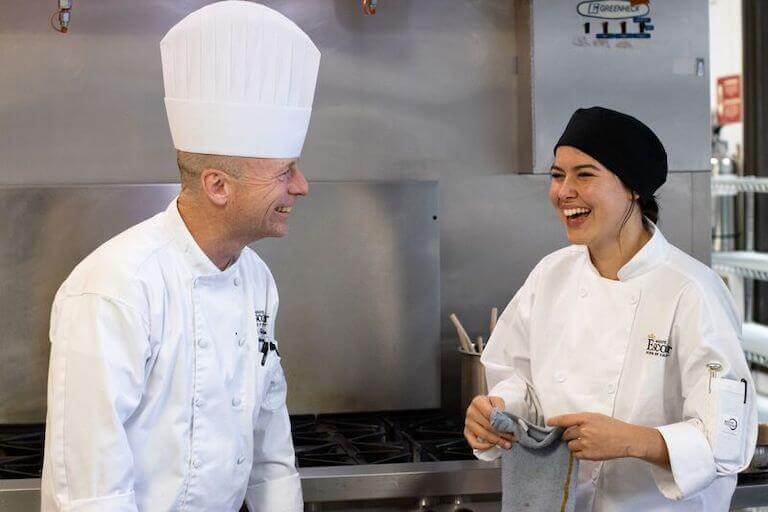
If you’re reading this now, you’re probably well aware that many restaurant kitchens are moving a mile a minute, and sometimes, it can seem downright chaotic. However, one of the best ways to create more of a “seamless kitchen flow” (especially in back-of-house) is by establishing a shared communication and vocabulary, which is exactly what the French technique offers.
Students who attend a French culinary institute usually discover a universal language that many professional chefs understand. French vocabulary is used as a reference point, which typically streamlines operations—improving multiple areas, including the quality of dishes and guest experience.
Create Eclectic Dining Experiences
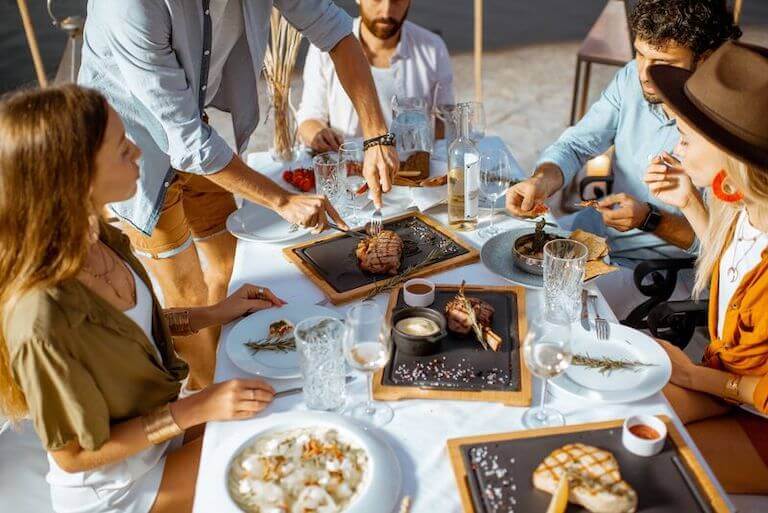
When aspiring chefs choose to attend a French cooking school, they quickly begin to understand how to design distinguished dining experiences. For example, one of the foundational pillars of French technique is creating highly detailed, elegant dining presentations.
During the haute cuisine revolution, Escoffier underscored the importance of smaller, more dainty meals, woven with precision. Today, many fine-dining restaurants still practice these French ideologies.
Practice French Culinary Techniques
When it comes to refining your culinary skill set, students who attend a French culinary institute may uncover timeless techniques, flavors, and inspiration that are practiced in contemporary dining. At Escoffier, students can start their culinary journey by exploring these French techniques—many first conceptualized by Georges Auguste Escoffier.
If you’d like to take the next step in your culinary career, contact us today to discover more about the financial aid process, and explore our culinary and pastry degrees and diplomas.
Interested in reading more articles about attending culinary school? Try these next:
- What to Know Before Enrolling in Culinary School
- 6 Benefits of Studying at a Top Culinary Institute
- Escoffier 101: Everything You Need to Know About Culinary School
*Information may not reflect every student’s experience. Results and outcomes may be based on several factors, such as geographical region or previous experience.

 “[My great-grandfather] certainly would be very proud of seeing all that is done under his name. He himself wrote in Memories of My Life that he was very proud of having taught and formed over 2000 chefs who in their turn went around the world and promoted French cuisine and techniques.”*
“[My great-grandfather] certainly would be very proud of seeing all that is done under his name. He himself wrote in Memories of My Life that he was very proud of having taught and formed over 2000 chefs who in their turn went around the world and promoted French cuisine and techniques.”*